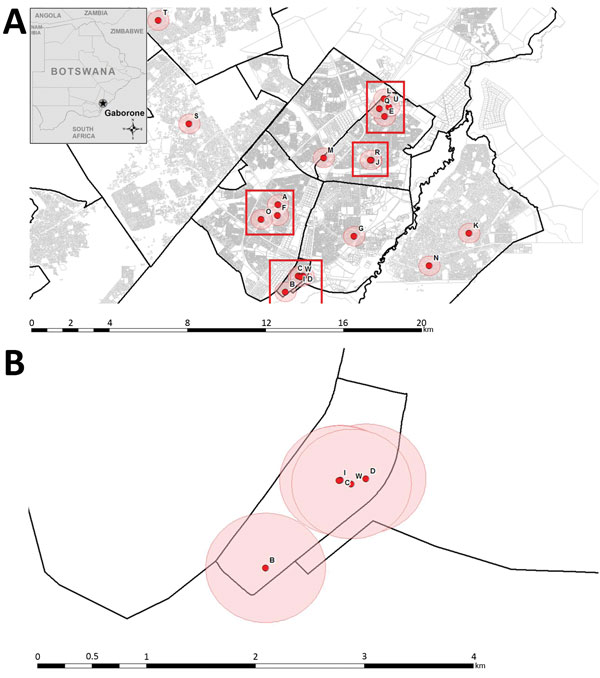Volume 23, Number 3—March 2017
Dispatch
Molecular, Spatial, and Field Epidemiology Suggesting TB Transmission in Community, Not Hospital, Gaborone, Botswana
Figure 2

Figure 2. Residence-associated data for patients in a tuberculosis cluster, Gaborone, Botswana, 2012–2015. A) Primary residences of 20 patients are indicated by red dots. Inset map shows location of Gaborone in Botswana. Black lines demarcate neighborhoods; gray lines demarcate property parcels; pink circles represent 0.5-km radius around a patient’s residence; and red rectangles indicate presence of 14 patients in 4 distinct neighborhoods, 13 of whom had spatial links. Four patients who are not depicted on this map lived outside of Gaborone and did not have any spatial links between them. B) Primary residences of 5 patients who lived in the same neighborhood. Parcels locations were intentionally not shown to protect individual case anonymity. Geodata were sourced from Statistics Botswana (http://www.cso.gov.bw).
1Other members of the Kopanyo Study Group are listed at the end of this article.